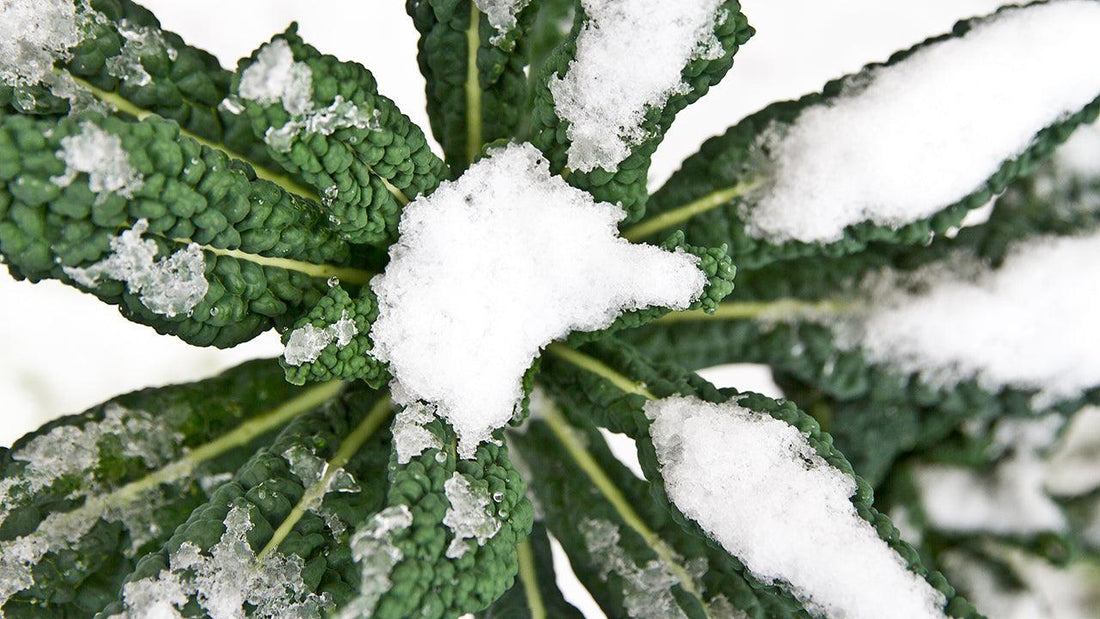Winter Garden Checklist: Tasks to Keep Your Garden Thriving
Winter may seem like a time to rest and take a break from outdoor gardening, but it's actually the perfect season to prepare your garden and orchard for success in the coming year. From pruning fruit trees to protecting plants from frost, winter offers numerous opportunities to tend to your plants and maintain the health of your landscape. In this winter garden checklist, we’ll guide you through essential tasks to ensure your garden and orchard remain healthy and productive.
Caring for Your Orchard
Winter is an ideal time to focus on orchard maintenance. With trees dormant, you can prune, clean up debris, and prepare for the upcoming growing season.
1. Clean Up Debris
- Remove fallen leaves, rotting fruits, and other debris around your trees to prevent overwintering pests and diseases.
- Dispose of debris far from your orchard to avoid reintroducing problems.
2. Prune Fruit Trees
- Prune apples, pears, peaches, and nectarines during winter dormancy.
- Pruning encourages healthy growth, improves air circulation, and enhances fruit production.
- If you’re unsure how to prune, check out resources like our Fruit Tree Central videos for guidance.
3. Apply Dormant Sprays
- Use dormant sprays after leaf drop to manage overwintering insect eggs, mites, scale, and fungal diseases such as peach leaf curl.
- For peach leaf curl, treat stone fruit trees three times during the winter:
- After leaf drop.
- Around New Year’s Day.
- Around Valentine’s Day.
- Follow the product label for proper application rates and techniques.
4. Protect Trees from Wildlife
- Winter can drive hungry rabbits and deer to chew on trees and plants. Protect trunks with tree wraps or install barriers to keep wildlife at bay.
5. Order and Plant Bare-Root Trees and Perennials
- Winter is the best time to order and plant bare-root trees, berries, vines, and perennial vegetable crowns.
- Act early to secure your preferred varieties, as popular options sell out quickly.
Maintaining Your Garden
Winter tasks in the garden focus on protecting plants, preparing soil, and planning for the next growing season.
1. Add Compost and Mulch
- Apply a layer of compost and mulch around perennial vegetables (e.g., asparagus, artichokes, and rhubarb) and berry plants to protect them from freezing temperatures.
- Mulch helps retain soil moisture, regulate temperature, and improve soil health.
2. Protect Plants from Frost
- Use frost blankets to shield perennials from hard frosts.
- For raised beds or gardens, build a hoop house and cover it with greenhouse poly to grow cool-season crops like lettuce and greens through the winter.
3. Manage Your Compost Pile
- Continue adding to your compost pile during winter.
- Ensure the pile remains moist but not soggy; add a compost cover if it's getting too wet.
4. Plan Next Year’s Garden
- Reflect on lessons learned from last year and start mapping out your garden layout.
- Incorporate crop rotation to maintain soil health and order seeds early to secure your desired varieties.
5. Prune Berries
- Prune blackberries and raspberries during dormancy to encourage healthy growth.
-
For Blackberries:
- Erect varieties: Remove dead canes and cut back laterals to 12–18 inches.
- Semi-erect varieties: Thin to 5–8 strong canes and shorten laterals to 12–18 inches.
- Trailing varieties: In cold regions, leave canes on the ground and cover them with row covers for protection. In spring, tie canes to a trellis.
- For Raspberries: Thin out dense patches and remove dead canes.
Around the House
Winter is also the time to ensure your home and indoor plants are ready for the season.
1. Store Firewood Properly
- Keep firewood away from your house to prevent pests like termites and cockroaches from migrating indoors.
2. Care for Indoor Plants
- If moving potted plants indoors, monitor humidity levels and ensure they’re not in direct airflow from vents.
- Place plants in bright, indirect light to mimic their outdoor conditions.
3. Prune Roses
- Hybrid tea roses benefit from winter pruning, especially in mild climates like California.
- Prune canes by 1/3 to 1/2, leaving them at least 18 inches tall.
- Cut above outward-facing buds to encourage outward growth. Remove any deadwood and suckers.
Essential Winter Gardening Tools
To make winter gardening tasks easier and more efficient, consider stocking up on:
- Tree wraps and frost blankets.
- Mulch and compost supplies.
- Dormant sprays and sprayer accessories.
- Pruning shears and loppers.
Planning for February
As winter progresses, keep an eye on your garden and orchard to ensure all tasks are completed in time for spring. Use February to finish pruning, prepare soil for planting, and start early seedlings indoors if desired.
Why Winter Gardening Matters
Taking care of your garden and orchard during the winter months sets the stage for a productive growing season. Winter tasks like pruning, applying dormant sprays, and protecting plants from frost are essential for maintaining plant health and preventing pest and disease problems. By staying active in the garden throughout the colder months, you’ll be better prepared for spring planting and enjoy a thriving garden all year long.
Final Thoughts
Winter doesn’t mean taking a break from gardening—it’s a time to care for your orchard, prepare your soil, and plan for the next growing season. With this checklist, you can ensure your garden remains healthy and productive, even during the coldest months. So bundle up, head outside, and give your plants the care they deserve!



